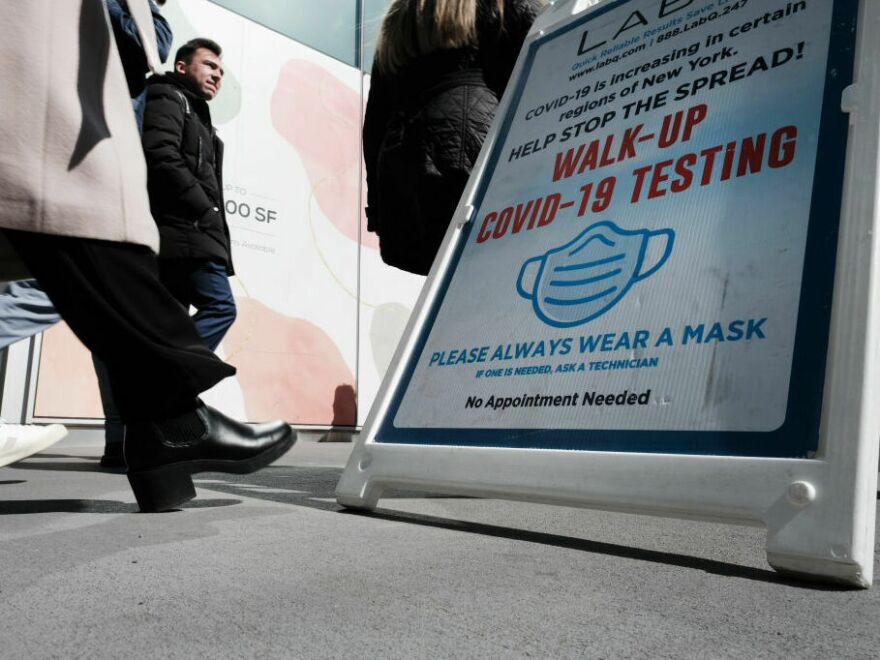In the latest sign that the pandemic is receding, the Centers for Disease Control and Prevention Friday announced plans to scale back the data the agency will regularly report about COVID-19.
But CDC officials stress that the information the agency will still continue to collect and routinely post on its website will still provide the necessary metrics to track the coronavirus and identify and respond to any new threats.
"We will continue to keep our eye on the COVID-19 ball," Dr. Nirav Shah, the CDC's principle deputy, told reporters in announcing the change. "And will do so through a multitude of metrics."
The changes are prompted by the coming end of the Public Health Emergency which is set to expire on May 11.
One of the biggest change is that the agency will no longer regularly track and release the number of new COVID infections. That's largely because states will no longer be required to report new cases. In addition, home testing, which mostly isn't reported to authorities, has made new infections a less reliable metric, Shah says.
Instead, the agency will start relying on the number of people being hospitalized for COVID as an indicator of how much the virus is spreading. A CDC analysis of the new approach released Friday confirmed it will be effective, Shah says.
The CDC will also continue to monitor and report how many people are dying from COVID as well as how often people are getting so sick they end up requiring care in emergency rooms.
Wastewater monitoring for the virus will provide additional crucial metrics, he says.
In addition, the agency will continue to monitor genetic analyses of the virus, including among arriving international travelers, to spot any new, potentially worrisome variants.
The changes didn't surprise independent public health experts.
"Overall some good news here," wrote Sam Scarpino, an infectious disease researcher at Northeastern University in an email to NPR. "Continuing wastewater, traveler screening, and genome sequencing will be important to ensure the infrastructure is maintained for the next time we need it."
But others voiced concern that investments in public health were being rolled back.
"This comes as no surprise at all but is further evidence that these investments were always temporary and not part of a long term strategy to be better public health data stewards," Beth Blauer, who helped run a highly respected COVID data tracker at Johns Hopkins that ceased operation ceased operation in March, wrote in an email.
Blauer says she's also concerned that the nation's public health system was reverting to pre-pandemic standards. Under the new changes, state and local health departments are no longer required to report certain COVID data to the federal government.
This "will severely deplete the government's newly acquired arsenal of disease data surveillance," she wrote in another email with her colleague Lauren Gardner.
"For states to abandon the reporting of key metrics on the spread of the virus to the CDC simply because they are no longer legally required to do so is an abdication of our government's collective responsibility to keep the public informed and protect the lives and livelihoods of all Americans," they wrote.
Others are concerned that the changes will result in patchwork surveillance measures.
"Wastewater surveillance is ... really spotty, so there'd be large parts of the country not covered by this surveillance," wrote Jennifer Nuzzo, who heads Brown University's Pandemic Center, in an email.
"I am most worried about how we track hospitalizations," she says. "At this point in the pandemic, hospitalizations are the best indicator of whether the level of infections that are occurring will be disruptive. But we are scaling back the level of hospital data we are collecting."
Nuzzo also argues that "we should be using this period of relative quiet to strengthen our surveillance of serious respiratory infections that land people in the hospital."
That's crucial because "we are still trying to sort out who is hospitalized with or for COVID and reducing the frequency with which data are reported makes it harder to parse the data and interpret their meaning. It also makes it harder to act swiftly."
Scarpino agrees there could be problems.
"Moving from state to regional level data and the elimination of county-level risk will lead to even more disengagement from the public and media," he wrote in an email.
"Despite the gains we've made, deaths are still way too high," Scarpino notes. They're currently hovering around 1,100 a week, according to CDC data. There have been 1.1 million COVID deaths in total in the U.S. to date.
"The CDC should be redirecting efforts to understanding in as real-time as possible what's driving variability across states and regions in mortality," he says.
The move to scale back some of its data efforts, he says, "signals that the CDC has given up on reducing mortality, which is unacceptable."
Editing by Carmel Wroth.
Copyright 2023 NPR. To see more, visit https://www.npr.org.



